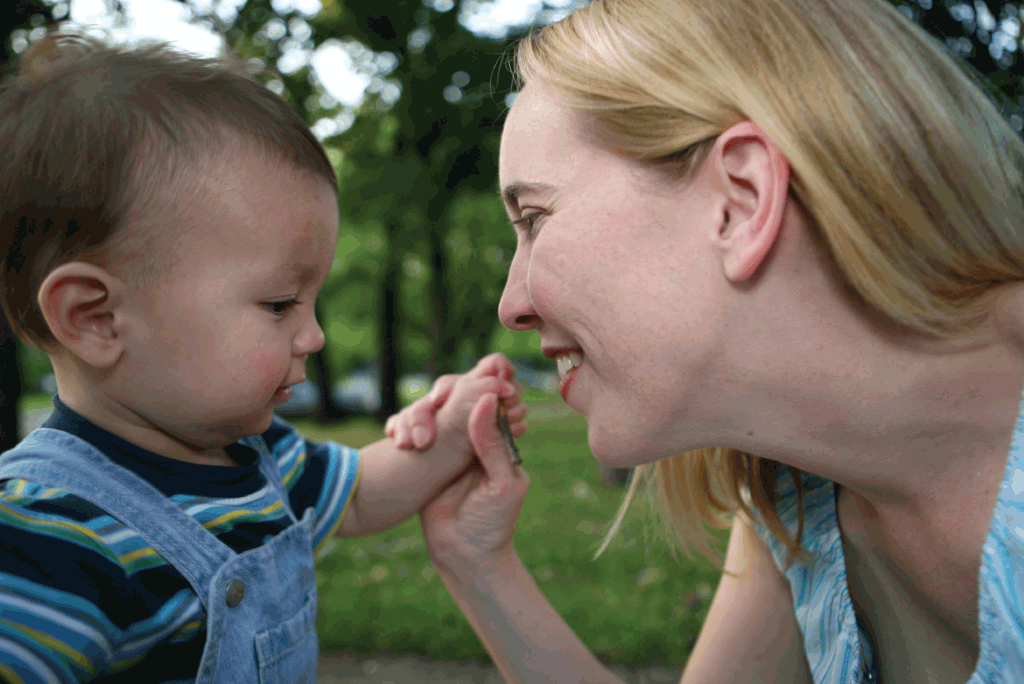In this theme, we track what children know about language and how this changes as they age and develop. We study how caregivers talk to children, and how children’s abilities and personality affect how they respond to, and learn from, their caregivers.
Infant directed speech
For example, in one project, led at MPI by Christina Bergmann, we joined up with sixty-eight other labs around the world, across four continents (the ManyBabies team) to test some of our theories about how children learn across many different languages and cultures simultaneously. For example, in the first ManyBabies study, we tested whether young infants prefer to listen to infant-directed speech (IDS) over adult-directed speech (ADS). Infant-directed speech has special properties that may grab children’s attention, encourage them to focus on what is being said, and thus help language learning. But most of the previous research on this has been done with North American children who are learning English. We found that infants across the world do prefer infant directed speech, no matter what language they are learning. These findings have important implications for our understanding of how children use their input to learn language.


Differences in language development
Another project, headed by Caroline Rowland, explores why some children develop language more quickly than others. In this project, Language 0-5 Project, we tracked the language development of 90 English-learning children from 6 months to 4;6 years, measuring a huge range of different possible influences on language development. We are using these results to develop explanations why children differ in the speed with which they learn language. We are also using them to study how a child’s family circumstances affect language development, and to give evidence-based advice about how to speed up the language development of the slowest children.
Language aquisition
Spoken language is a rapid and transient signal, quickly fading as soon as it is produced. In order to understand speech, we have to process (extract information from) this signal very quickly, before it fades. Adults achieve this by making use of the wealth of information about language they have built up over the years. But children don’t have this knowledge, which makes their task seemingly hopelessly complex. They have to both process the fast moving, transient speech signal, and learn a whole language system from it. We still know very little about how children manage to succeed at this. We don’t know how children’s processing mechanisms develop, and we don’t fully understand how processing constrains language development. Evan Kidd's research group aims to fill these knowledge gaps. Since languages all differ in a range of ways, we study this problem across a wide array of languages.
Read more?
Byers-Heinlein, K., et al (2021). A multilab study of bilingual infants: Exploring the preference for infant-directed speech. Advances in Methods and Practices in Psychological Science, 4(1), 1-30.
Peter, M. S., Durrant, S., Jessop, A., Bidgood, A., Pine, J. M., & Rowland, C. F. (2019). Does speed of processing or vocabulary size predict later language growth in toddlers? Cognitive Psychology, 115: 101238.
Donnelly, S., & Kidd, E. (2020). Individual differences in lexical processing efficiency and vocabulary in toddlers: A longitudinal investigation. Journal of Experimental Child Psychology, 192: 104781.